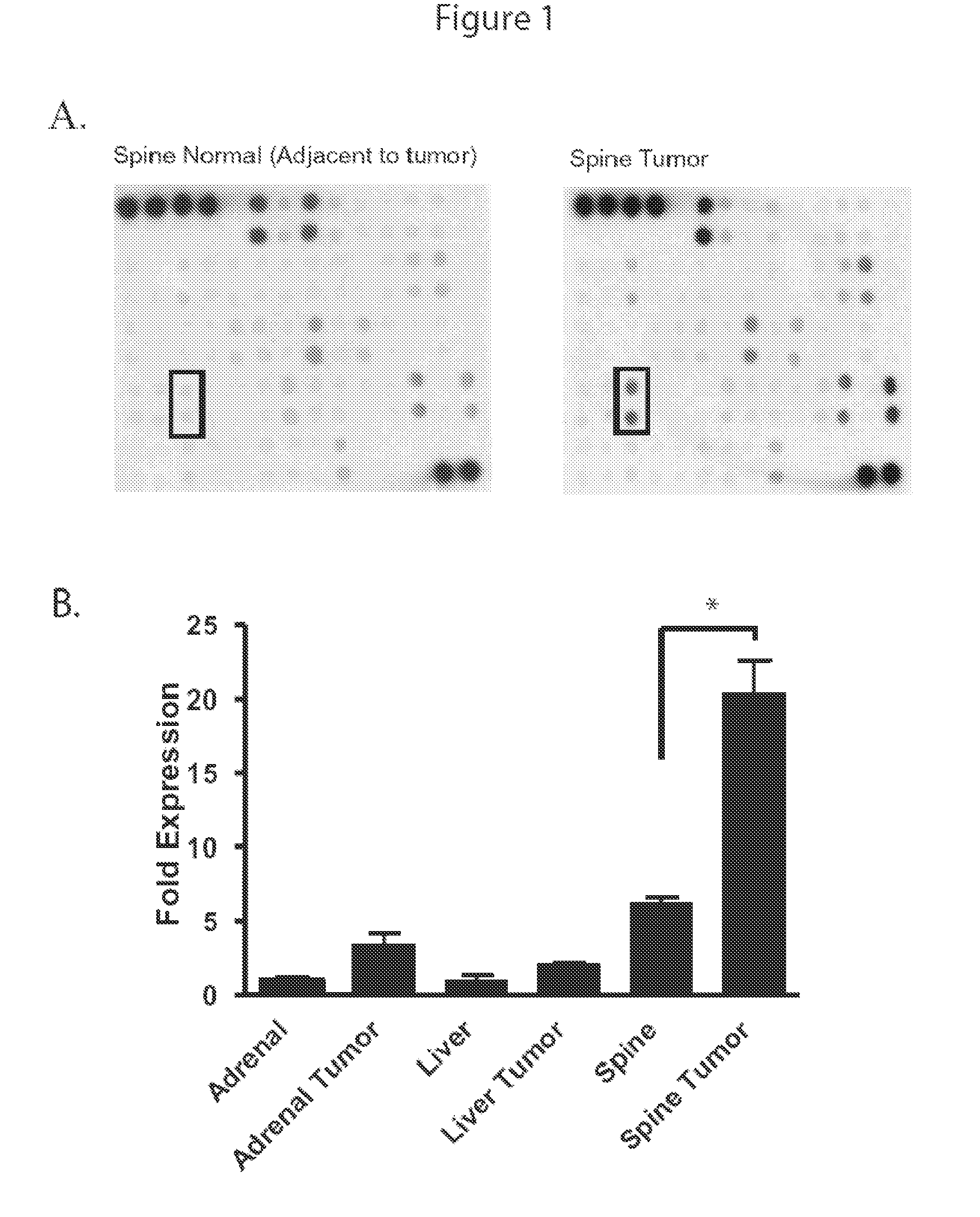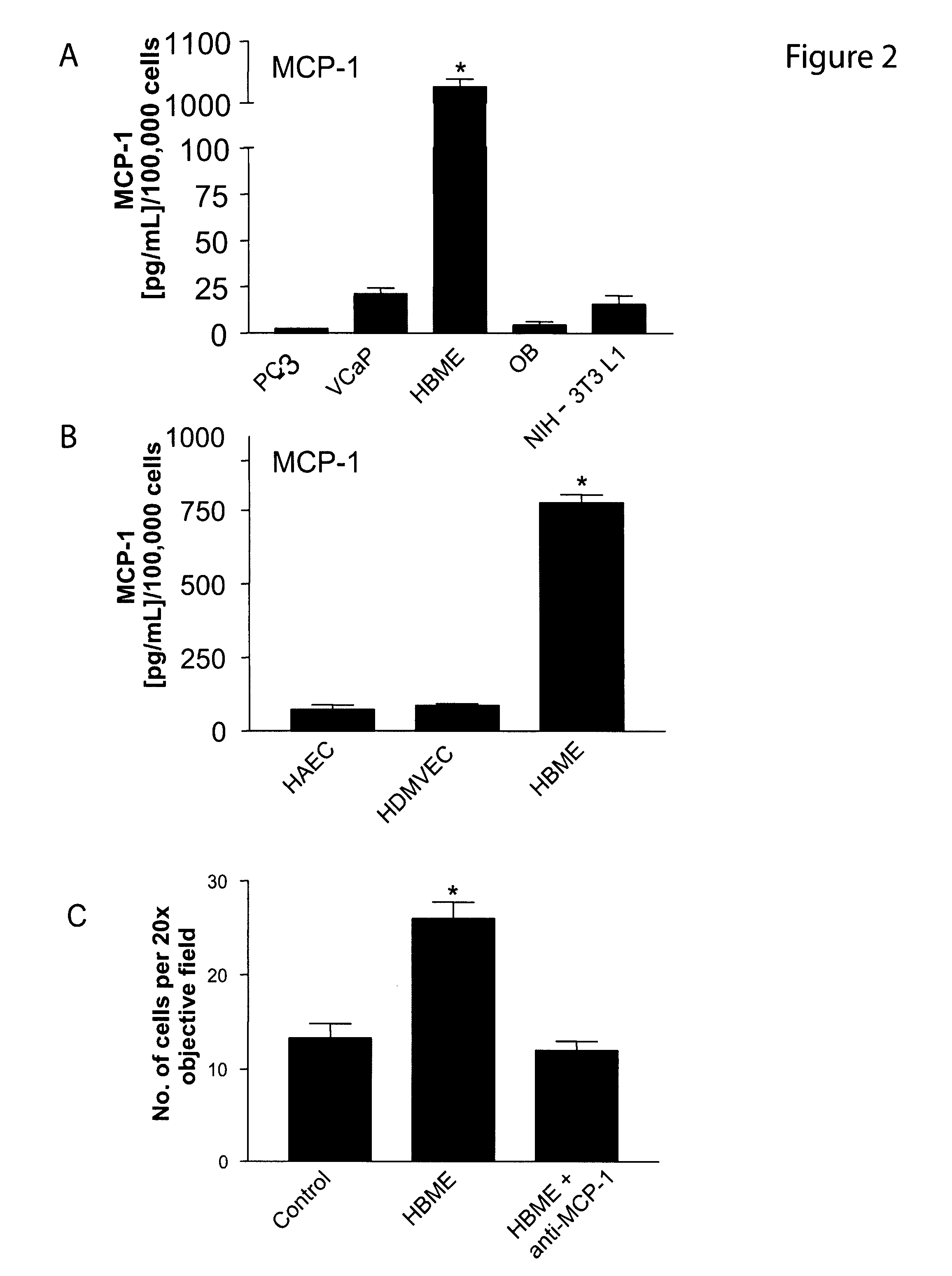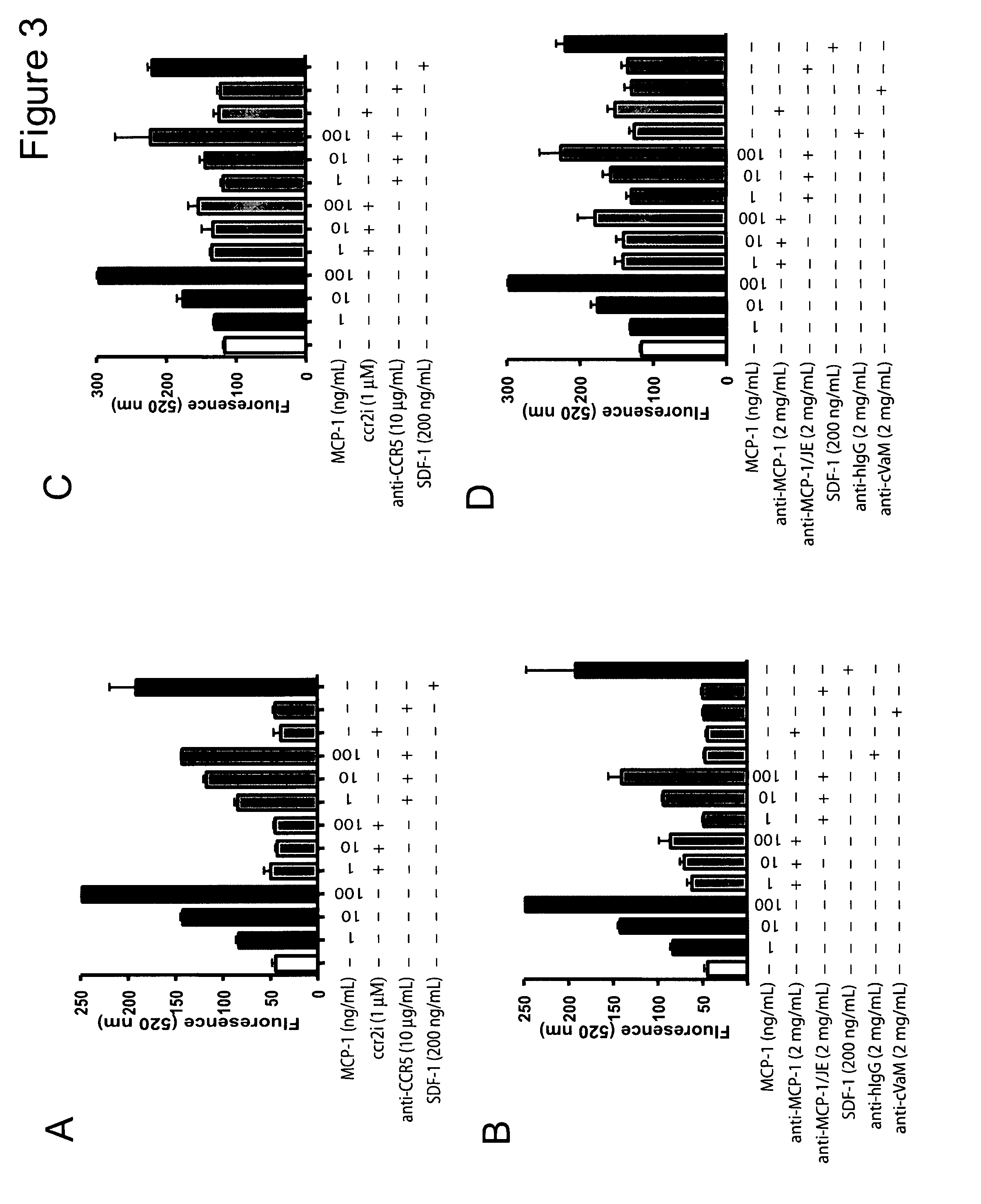Diagnosis and treatment O prostate cancer
a prostate cancer and mcp-1 technology, applied in the field of prostate cancer diagnosis and treatment, can solve the problems of lack of prostate cancer sensitivity and specificity of serum psa test, unknown impact of psa screening on cancer-specific mortality, etc., to prevent prostate cancer metastasis, inhibit mcp-1 biological activity, and reduce mcp-1 activity
- Summary
- Abstract
- Description
- Claims
- Application Information
AI Technical Summary
Benefits of technology
Problems solved by technology
Method used
Image
Examples
example 1
Role of MCP-1 in Prostate Cancer Metastasis
[0253]This Example describes the role of MCP-1 in prostate cancer metastasis to the bone.
A. Experimental Procedures
[0254]Materials-Human recombinant MCP-1 and anti-MCP-1 antibody were obtained from Chemicon International (Temecula, Calif.), anti-phospho AktSer473 and anti-Akt were obtained from Cell Signaling (Beverly, Mass.), all other reagents were obtained from Sigma-Aldrich.
[0255]Cell Culture-PC-3, VCaP, HAEC, HMVEC, HBME were obtained from ATCC and passaged under appropriate growth conditions. PC-3 cells were maintained in RPMI 1640+10% Fetal Calf Serum (FCS) (Invitrogen Corp.). HAEC and HMVEC cells were maintained in EGM+5% FCS while VCaP and HBME cells were maintained in DMEM (Invitrogen Corp.). Cells were passaged by trypsinization using 1× Trypsin+EDTA (Invitrogen Corp.) and resuspended in appropriate growth media.
[0256]Cytokine Antibody Array-Normal vertebral and tumor vertebral tissue was collected from a patient with advanced ho...
example 2
Inhibition of MCP-1 Attenuates Prostate Cancer Epithelial Cell Proliferation and Metastasis In Vivo
[0274]Monocyte chemoattractant protein 1 (MCP-1) is a member of the CC chemokine family and is known to promote monocyte chemotaxis. Recent evidence has demonstrated that MCP-1 acts as a potent chemotactic factor regulating stromal—tumor epithelial cells (See Example 1). Using neutralizing antibodies to MCP-1 and the mouse homolog MCP 1 / JE, it was demonstrated that treatment of mice with VCaP subcutaneous tumors with both the anti-hMCP-1 (2 mg / Kg; twice weekly by i.p.) and the anti-MCP1 / JE (2 mg / Kg; twice weekly by i.p.) antibodies attenuate tumor growth by 42.2% and 55.2% respectively. Treatment with anti-MCP1 / JE (2 mg / Kg; twice weekly by i.p.) attenuates PC-3Luc mediated overall tumor burden in an in vivo model of prostate cancer metastasis by 95.9% at 6 weeks post-intracardiac injection. In conclusion, MCP-1 is a potent regulator of prostate cancer motility and proliferation and pla...
example 3
MCP-1 TRAP
[0275]An MCP-1 TRAP molecule was synthesized by inserting the MCP-1 binding site identified in the high affinity receptor, CCR2, into an Fc fusion vector (PFUSE) to create an Fc fusion protein coupling the binding sequence to the human IgG1 CH2 and CH3 domains of the IgG heavy chain including the hinge region (FIG. 9). Utilizing the Fc fragment will allow the synthesis of a more stable compound with a longer half life in vivo. COS7 cells are transfected with the pFUSE-MCP1 TRAP construct using Lipofectamine 2000 following the manufacturer's instructions. An empty pFUSE vector and a pFUSE-Scrambeld sequence serve as the two negative controls in all experiments. Transfected COS7 cells are selected under Zeocin resistance and clones are isolated and tested for secretion of the MCP1RFc protein by ELISA. Positive subclones producing MCP1 TRAP fusion protein are used for synthesis and purification by protein A-Sepharose affinity chromatography (Pharmacia, Piscataway, N.J.) follo...
PUM
| Property | Measurement | Unit |
|---|---|---|
| concentrations | aaaaa | aaaaa |
| concentrations | aaaaa | aaaaa |
| emission wavelength | aaaaa | aaaaa |
Abstract
Description
Claims
Application Information
 Login to View More
Login to View More - R&D
- Intellectual Property
- Life Sciences
- Materials
- Tech Scout
- Unparalleled Data Quality
- Higher Quality Content
- 60% Fewer Hallucinations
Browse by: Latest US Patents, China's latest patents, Technical Efficacy Thesaurus, Application Domain, Technology Topic, Popular Technical Reports.
© 2025 PatSnap. All rights reserved.Legal|Privacy policy|Modern Slavery Act Transparency Statement|Sitemap|About US| Contact US: help@patsnap.com



